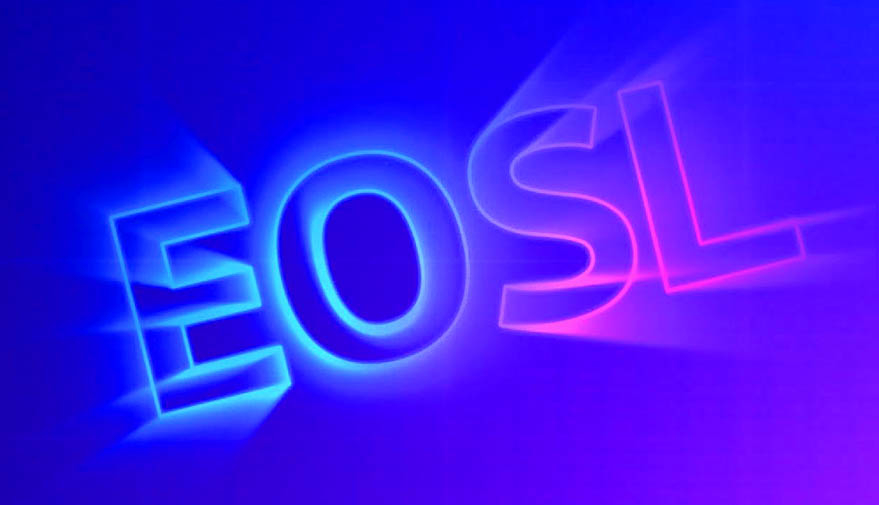“End of Service Life”, to most of the IT Managers, means a situation that begins with a tedious exercise of new business justification, planning and execution of new IT hardware in the organisation so that business can run as usual. However, the research says that there is a need to change the way IT managers think. With some planning and the right IT support partners, End of Service Life does not always need to mean, end of service.
What EOSL Means?
Every business house will expect uninterrupted working of IT Infrastructure irrespective of the age of the IT infrastructure. No argument will justify interruption to the ongoing business as its vital to the functioning of the Company’s business and survival.
Since most of the IT infrastructure are likely running on leading brands like HPE, Dell EMC, Cisco and NetApps etc. as they reach EOSL with the manufacturer, it may feel that only three decisions are available: upgrade or risk keeping equipment unsupported or go for new products
EOSL does not mean the end of service. Endings can be opportunities for new beginnings entirely. It just takes an I&O leader creative enough to understand how to reframe the story. It involves someone who can think critically and who knows the right questions to ask. Over 70% of Fortune 500 companies are using TPM as a form of support in their environment.
Maintenance Checklist
What if instead of resigning themselves to manufacturer dictated upgrades, I&O leaders were to begin their EOSL review by looking at different approaches to IT Hardware maintenance? What if the review didn’t just restrict itself to vendor-supplied maintenance policies but took a wider strategy on?
Our reading found that Gartner has four recommendations that I&O leaders responsible for infrastructure modernization should keep on their checklist.
Gartner writes:
“Recommendations – I&O leaders responsible for infrastructure modernization should:
- Qualify TPM providers by using the due diligence script provided in this research before deciding to discontinue OEM maintenance.
- Quantify the risks of forgoing microcode/software updates by charting update activity (updates/quarter) over the preceding two years.
- Redeploy old storage arrays into non-business-critical or non-mission environments for gaining experience with TPM or for overcoming resistance to its utilization.
- Bring your arrays up to the most current stable hardware and microcode release levels before switching to TPM.”1
Let’s break these down a bit more by taking a big-picture approach. What are some of the factors influencing upgrade recommendations?
Gain Leverage over IT Infrastructure Upgrades
According to Gartner report,
I& O leaders who restrict themselves to vendor-supplied maintenance often find themselves doing infrastructure refreshes due to punitive vendor policies around post warranty support pricing that means keeping their systems on maintenance is more expensive than replacing them. These users also frequently find themselves in effectively sole-source situations because of an incumbent vendors’ ability to use maintenance waivers to create financial barriers that are too high for nonincumbent vendors to overcome.
HPE, IBM, Dell EMC all have sales objectives influencing product lifecycle terms. In fact, Gartner states, “The useful service life of storage arrays, which is seven to eight years in clean data centres, is almost always greater than their planned service lives.” So again, where is this rush coming from and who is it serving? The same stands true for other IT products as well.
End of Service Life announcements means that an OEM will stop offering technical and maintenance support after a designated date (or they will begin charging much, much more for those services). But EOSL doesn’t mean it’s time to queue up the funeral march for your existing products. Upgrading is often not the most strategic option when it comes to EOSL management.
You should be able to maintain your infrastructure until your company’s needs outgrow it. You shouldn’t have to upgrade just because your vendor tells you it is time to upgrade. These “regular” budget-busting upgrade or refresh are often not necessary.
You know your business best. You should be able to make these decisions without unfounded FUD clouding your decision-making process. Keeping in mind the Gartner Recommendations quoted above, this is where TPM can come into play in the I&O leaders’ EOSL Maintenance strategy.
Third-Party Maintenance Benefits
Reduce costs. Negotiate lower rates from vendors. Extend the useful service life of installed IT Infrastructure. These are the leverage that I&O leaders may not even know they have.
With a third-party maintenance provider, you can add capacity as needed on the storage, keep the servers and network infrastructure running uninterrupted – effectively extending the planned service life of your existing infrastructure.
Let’s break down three specific ways that TPMs can help I&O leaders realize significant cost optimizations:
- First of all, any time you can delay equipment purchases and keep your older IT Infrastructure in production longer, you are better leveraging the “useful life” of an asset.
- A TPM service contract lowers the value of maintenance waivers, forcing your current vendors to more heavily discount their bids.
- Plus, working with a TPM provider can help balance the negotiations with vendors because you are not held hostage by your need for annual software maintenance as your microcode is considered mature.
Additionally, a TPM provider like Cynergy can offer you flexible contract terms, enabling you to ensure that your maintenance costs work within the constraints of your budget processes and planning cycles.
Defining what we need from 3P contrators
IT operation leader must ensure to define Service Level Agreements (SLAs) and Service Level Objectives (SLOs) that can support overall IT and business objectives.
Some of the recommendations include:
- A review of microcode update activity for your arrays
- An audit of your infrastructure to determine which workloads are mission-critical versus non-mission-critical
- When considering third-party maintenance for IT Infrastructure, remember all TPM providers are not the same. Make sure they can support all the platforms of IT infrastructure. One can remove significant risk by selecting a TPM provider with a proven track record.
Centralize all your needs around support on EOSL IT Products
Organisations like Cynergy, in India, can extend support on all the EOSLs and help decrease capital expenditures and free IT teams from the burden of daily support tasks and costly manufacturer constraints.
If your EOSL date has been announced (or is rapidly approaching), now’s the time to connect with Cynergy Technologies service and ask for a solution to provide comprehensive break/fix support for an extensive list of platforms from manufacturers like HPE, Dell, Cisco etc


